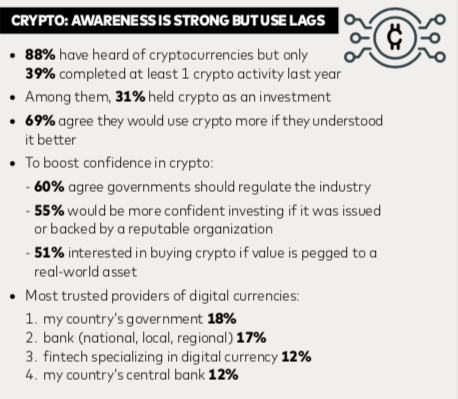APAC consumers ahead in digital payments uptake: Mastercard
By Digital News Asia August 29, 2022
- Seven in 10 APAC consumers increased digital payment usage in 2021
- Four in 10 in APAC cut back on use of cash in the last year
.jpg) A survey by Mastercard noted that consumers in the Asia Pacific region remain among the most enthusiastic adopters of digital payments in the world, with 88% having used technologies like digital wallets, QR codes, Buy Now Pay Later (BNPL), cryptocurrencies, biometrics and others in the last year.
A survey by Mastercard noted that consumers in the Asia Pacific region remain among the most enthusiastic adopters of digital payments in the world, with 88% having used technologies like digital wallets, QR codes, Buy Now Pay Later (BNPL), cryptocurrencies, biometrics and others in the last year.
In a statement, the payments giant said what’s more, 69% of APAC consumers increased their usage of at least one digital payment method during the same period, demonstrating momentum. 
Mastercard said in comparison, only 52% of consumers in North America and just 48% in Europe, (regions where consumers tend to be more guarded and cautious about emerging payment technologies) increased their usage in the same way.
This latest data on payment habits, attitudes and preferences was published in Mastercard’s second annual New Payments Index (NPI): a global consumer survey spanning 40 markets across five regions, including seven in APAC: Australia, China, India, Japan, New Zealand, Thailand and Vietnam.
Mastercard said while the Covid-19 pandemic was the catalyst for the unprecedented, rapid uptake of digital payments, its survey indicated that the change has been lasting, with 40% of respondents in APAC cutting back on their use of cash in the last year.
Despite this swing to digital forms of payment, respondents frequently indicated that they had reservations about the security and institutional backing of these new options, the firm added.
In fact, when deciding which payment method to use, security had the greatest influence on consumer choice, beating out discounts/promotions, rewards and even low interest rates, it said.
Sandeep Malhotra, executive vice president, products and innovation Asia Pacific at Mastercard, said, consumers in the this region have consistently shown a willingness to adopt innovative new technologies—and payments are no exception.
“Given the sheer speed with which payment options are proliferating, coupled with today’s global climate of uncertainty in socio-economic, health and political matters, it’s important that banks, governments and other stakeholders in the financial ecosystem proactively support the sustainable development of these new payment methods, including through regulation, bolstering security, and educating consumers.
“With reassurances such as these, it’s likely we will see even more extensive adoption of emerging payment technologies in the region,” said Malhotra.
Tahe APAC report also revealed that there is broad recognition among consumers that using biometric identification, such as fingerprint or facial recognition, is easier than remembering PINs or passwords (70%), and more secure than these traditional methods of verification (69%).
At the same time, only around half (53%) of respondents in APAC felt comfortable sharing their biometric data to save time, while 72% were concerned about which entities would have access to this data, Mastercard said.
Despite this, 58% of consumers used biometrics more frequently in the last year, demonstrating both an enthusiasm for the technology, and untapped potential if providers are able to properly address consumers’ misgivings about privacy, the survey indicated.
According to the survey, APAC is ahead of the curve with BNPL as 50% of consumers across the region say they are comfortable using BNPL today, while only 41% of consumers globally are comfortable using these installment plans.
In particular, consumers in APAC tap on BNPL offerings for their low/no interest payments, in times of emergency and when they want to expedite bigger purchases, it added.
Looking ahead, the survey noted that 55% in APAC say they are likely to use BNPL in the next year.
At the same time, building trust and comfort is key as APAC consumers feel safer using BNPL solutions backed by a major payment network (67%) or their existing bank (65%), rather than from other providers, it said .
.
The majority of consumers in APAC have heard of cryptocurrencies (88%), non-fungible tokens (NFTs) (68%), and other digital assets—but uptake has been gradual.
For now, though the focus is on investment, Mastercard noted.
The survey highlighted that among APAC consumers, 31% (and 44% of APAC millennials) report holding crypto as an investment during the past year, while future use cases that are popular among respondents include using crypto to redeem rewards, invest and make everyday payments.
It said just under half of respondents (46%) want increased flexibility to use crypto for everyday payments.
According to those surveyed, more involvement from governments and dependable institutions like banks (cited as the most trusted provider of digital currencies) would boost their confidence in crypto.
Diving deeper, 60% agreed that governments should regulate the cryptocurrency and stablecoin industry, while 55% would feel more confident investing in crypto or digital currencies that are issued or backed by a reputable organisation.
Related Stories :


